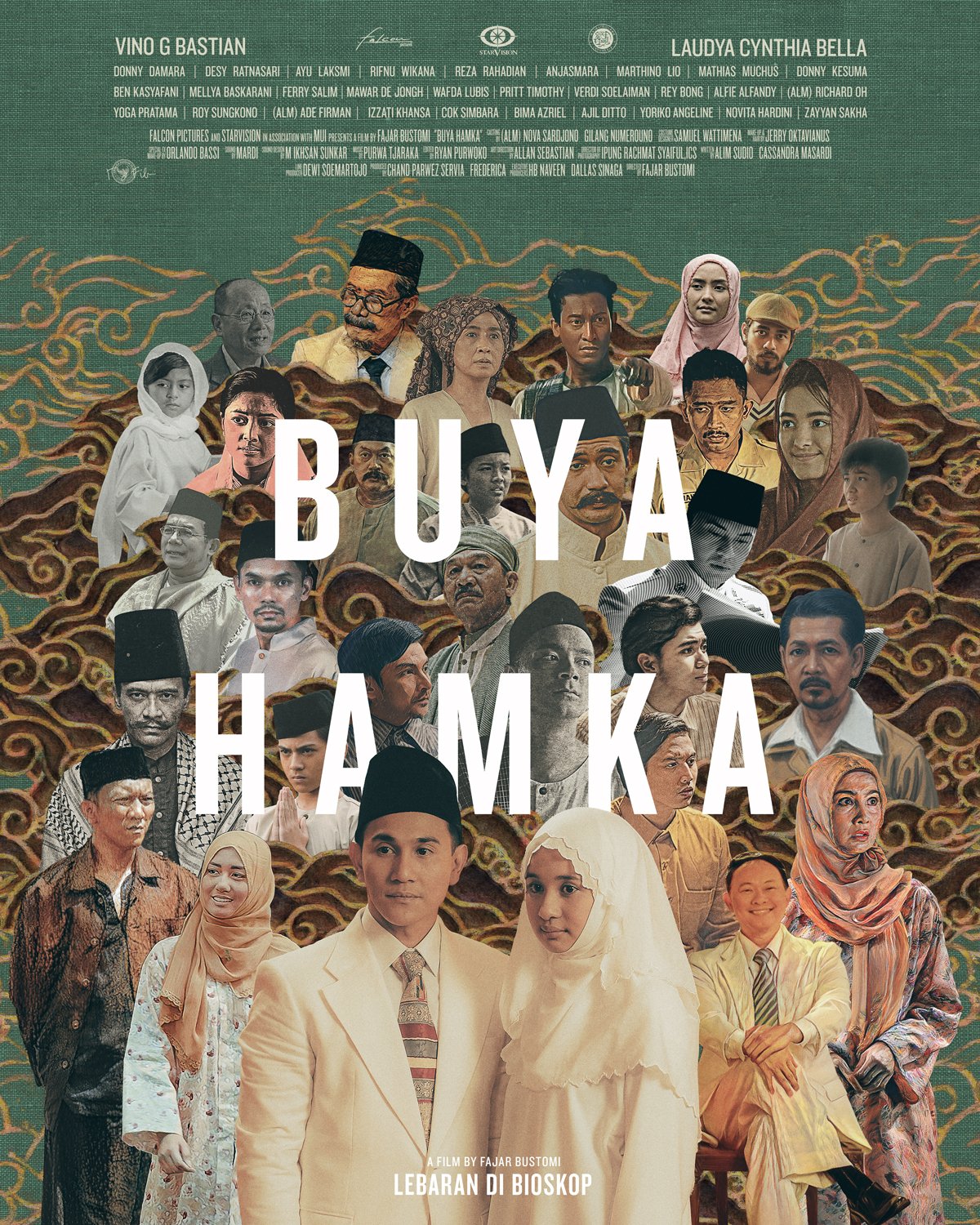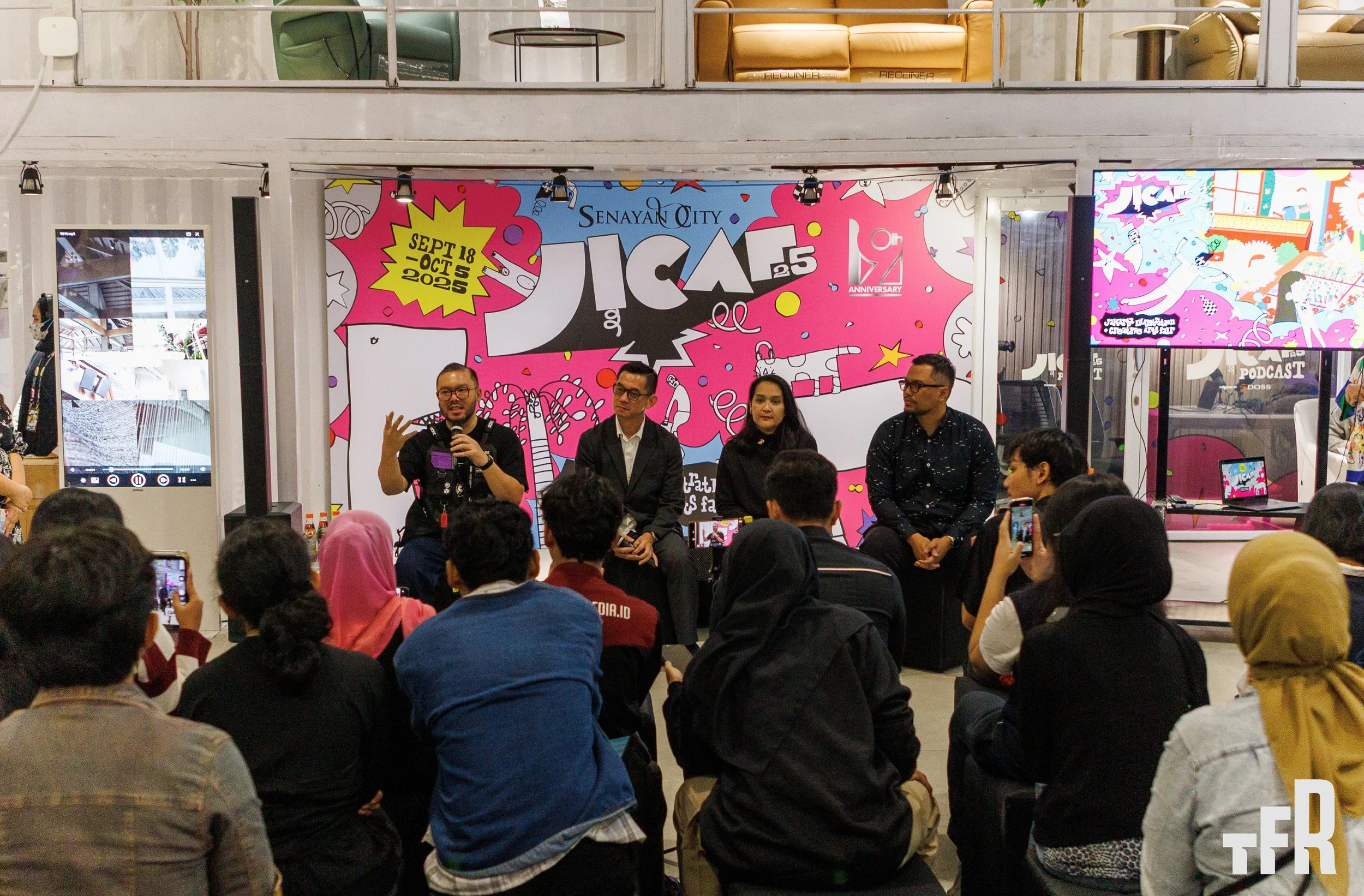The development of Indonesian religious film posters and their future
Written by Alessandra Langit | Read in Indonesian
The rapid development of the post-Reform Indonesian film industry is marked by the emergence of various genres. One of the top genres in the early 2000s was religious. Islam-based films wrapped in family dramas or romantic dramas have become the favourite shows of the Indonesian people. Religious-themed films open a promising and lucrative opportunity for big production houses and prominent producers. It came as no surprise that new religious films grace the Indonesian cinema screens every year.
In the new decade after 2010, religious films remained a favourite of Indonesian audiences. Cinema seats were filled even though those films had the same background, character development, storyline, shooting and colour, as well as the rarely mentioned film poster design. The characteristics of Indonesian religious film posters from year to year show that there is a certain pattern of film sales strategies that has long been the key to their success in attracting audiences.
If we dissect the posters of successful Indonesian religious films in the early 2000s such as “Ayat-Ayat Cinta” (Hanung Bramantyo, 2008) and “Perempuan Berkalung Sorban” (Hanung Bramantyo, 2009), we can see clearly that the Islamic elements were their main selling point. This was apparent in the depiction of women wearing religious attire such as veils and turbans. Another selling point was the actors and actresses. Instead of showing visual symbolism like alternative films, the posters of religious films showed the famous actors and actresses who played the lead characters.
In terms of colour choices, the posters of religious films used bold colours that gave the impression of seriousness, toughness and rigidity. With these characteristics, Indonesian religious films at the beginning of their heyday showed a clear position, namely selling the narrative of Islamic values commercially.
Entering the decade of the 2010s, Indonesian religious films began to feature the landscape or culture of other countries. However, in terms of plot, religious films were still focused on romantic dramas, such as love triangles. Along with these developments, the characteristics of Indonesian religious film posters also changed and created a new trend pattern. The posters of popular religious films such as “Assalamualaikum Beijing” (Guntur Soeharjanto, 2014), “99 Cahaya di Langit Eropa” (Guntur Soeharjanto, 2013) and “Bulan Terbelah di Langit Amerika” (Rizal Mantovani, 2015 and 2016) showed the unique landscape or buildings of foreign cities that built the narrative of the expansion and progress of Islamic teachings. The low saturation and faint colours in the posters represented the dreams and hopes told in the film. Not much different from the previous decade, the posters for these films still placed famous actors and actresses as the main focus. With these characteristics, Indonesian religious films still showed their commercial nature with the progress of religious values that keep up with the times.
In the 2020s, the popularity of religious films dimmed. Major production houses and filmmakers tapped into horror and youth romance films, filling cinema screens with mystical stories and youth romance stories. In the midst of a thirst for films with religious values, Falcon Pictures released a biographical film of an important figure in the development of Islam in Indonesia, "Buya Hamka", in April 2023. TFR had a virtual chat with Fajar Bustomi, director of “Buya Hamka”, to discuss the development of Indonesian religious films along with their visual innovations, such as posters, in this new decade.
The fate of Indonesian religious films in the new decade
The digital era opens a wide access to knowledge, including about ideological beliefs. Today, more and more religion-based perspectives are spreading among the Indonesian people. Thus, the fate of religious films that present religious norms and values is being questioned. However, the presence of “Buya Hamka” (Fajar Bustomi 2023) which managed to exceed the one million viewers mark proved that religious films still have a place in Indonesian society. Fajar Bustomi said that audiences need a variety of film themes, such as religious film, amidst the barrage of horror films.
“I believe that Indonesia is a religious nation. I believe that films that discuss religious messages and the virtue taught by religion will definitely have audiences," he said.
Fajar Bustomi explained that production houses, producers and directors need courage to get out of their comfort zone and popular genre trends in order to revive the religious film genre with good quality. With the success of “”, he proved that religious films, even those based on historical figures and events, were still well accepted by the Indonesian audience and provided a breath of fresh air amidst the domination of certain genres.
“Actually, films with religious themes and good teachings are successful when they are made properly. However, most of our filmmakers do not dare to try to make something different. There are still many of them who just follow market demand. So, someone has to be brave," he added.
Filmmakers’ courage is the key to making creative decisions in films, including posters
As one of the most successful religious films in this new decade, "Buya Hamka" offered a different poster design. Instead of following the characteristics of religious film posters in the previous decade, the poster of “Buya Hamka” featured unique textures, fonts, colours and cast placement. Conceptually, the poster wanted to sell the "classic feel" of the historical narration of Islamic figures through texture, dull colours and the costume of the cast. In addition, the poster also wanted to sell a new concept that was more pop than Indonesian religious films, which was shown through the fonts, composition and the use of the collage concept.
“Buya Hamka” poster | Source: Falcon Pictures
“The poster of “Buya Hamka” could be considered pop art because the fonts, actor photos, were all given a different effect. We wanted to make a religious film that doesn't look old-fashioned but still feels like a period film," Fajar Bustomi explained the poster concept.
He recounted that a lot of experimentation was carried out in making creative decisions for the film. The Jakarta-born director also said that filmmakers must have courage in breaking the obsolete norms of creative decisions in religious films. Of course, this process is not easy because Fajar Bustomi himself received a lot of criticism, ranging from the poster design to the colour grading.
"The poster of "Buya Hamka" is different, in terms of grading. Many protested, but for young people, it was something different and new. People who like the ‘usual’ protested, 'Why is this like this?'" said Fajar Bustomi.
In terms of colour grading, the poster of “Buya Hamka” was bolder in using colours that were rarely found in previous religious films. The poster also featured a black and white photo collage and really pop true colour photos. Fajar Bustomi also emphasised that he did not want any other language elements in the film poster in order to show the unique quality of Islamic teachings.
“The colour grading of “Buya Hamka” was not like other religious films in general. We were brave because we believed that the past doesn't have to be presented in a less saturated visual and all-black-and-white. Religious films could also look contemporary and nationalist without having to add additional elements in other languages, such as titles in Arabic," he said.
Fajar Bustomi's decision was of course out of the usual characteristics of Indonesian religious film posters. The courage to try new things is one of the keys to the success of Indonesian religious film development, including in creative decisions such as the characteristics of the poster design.




















